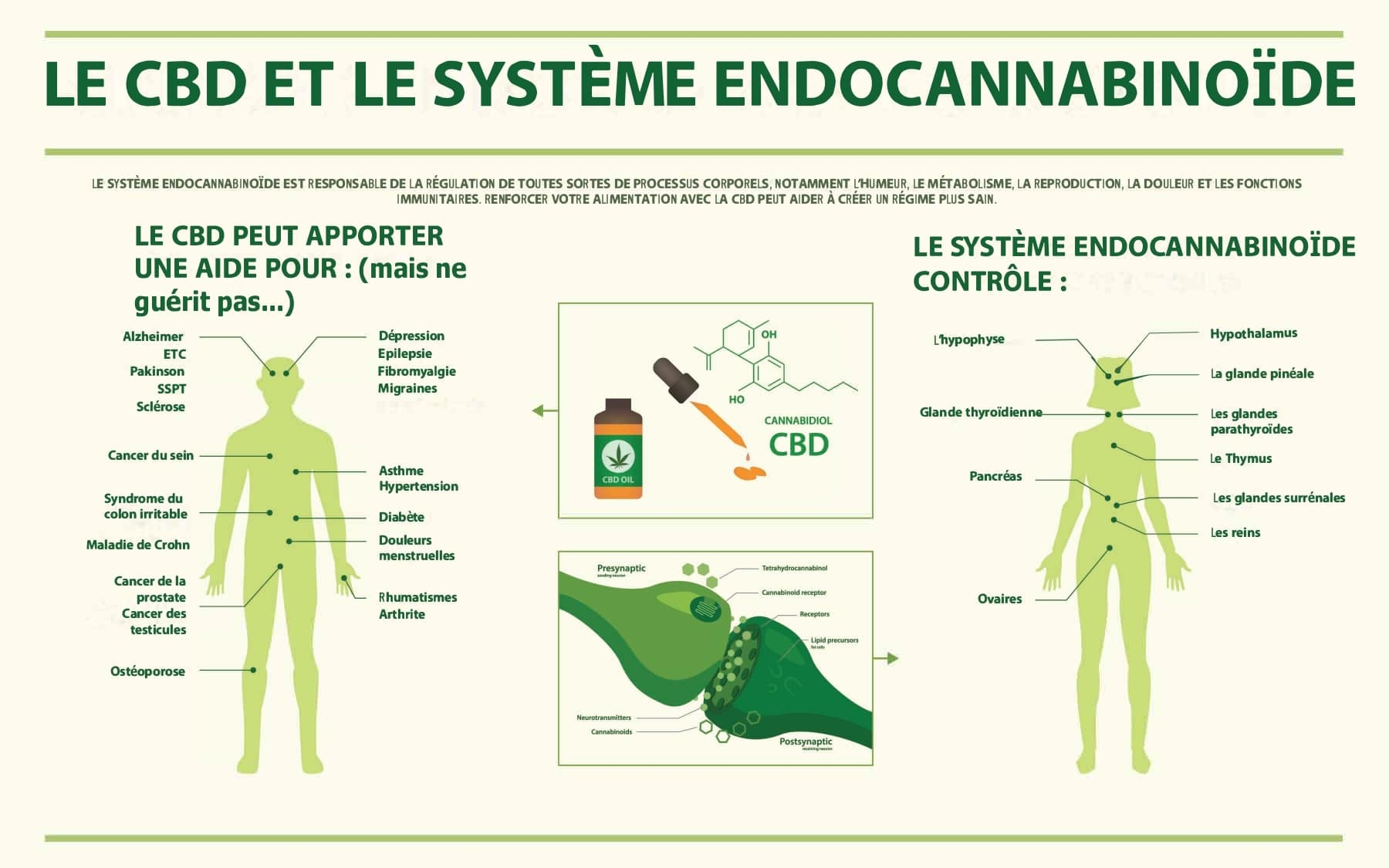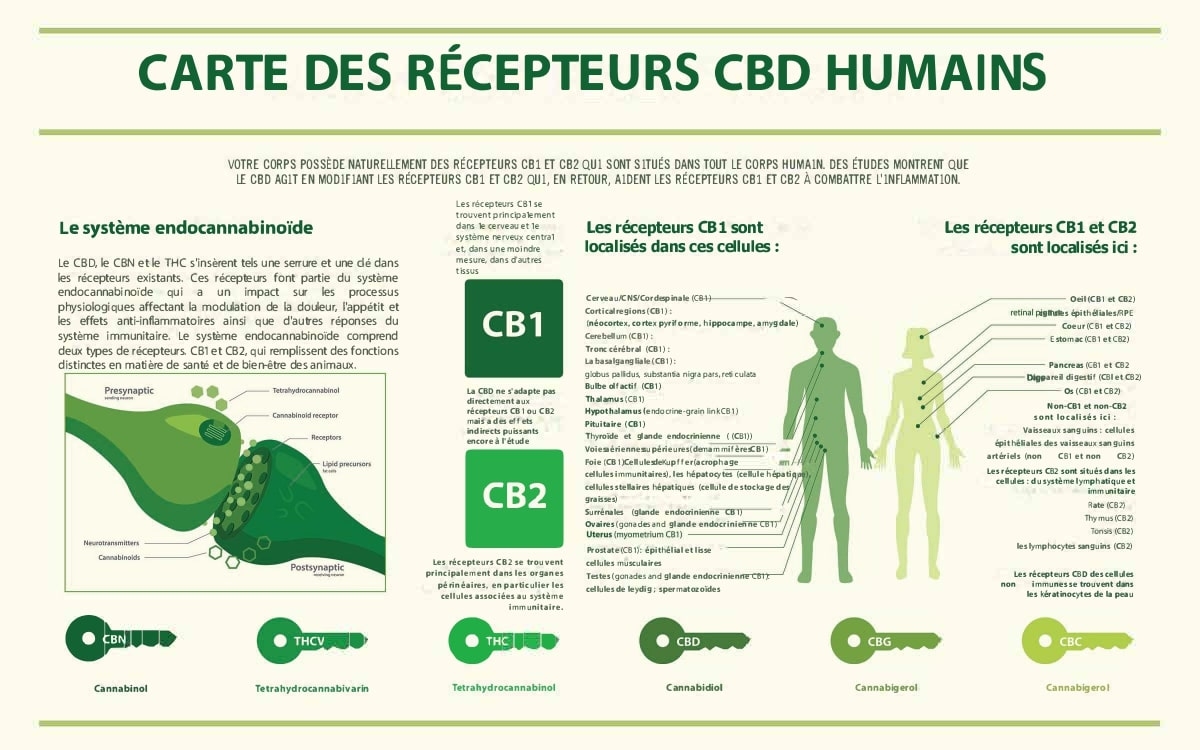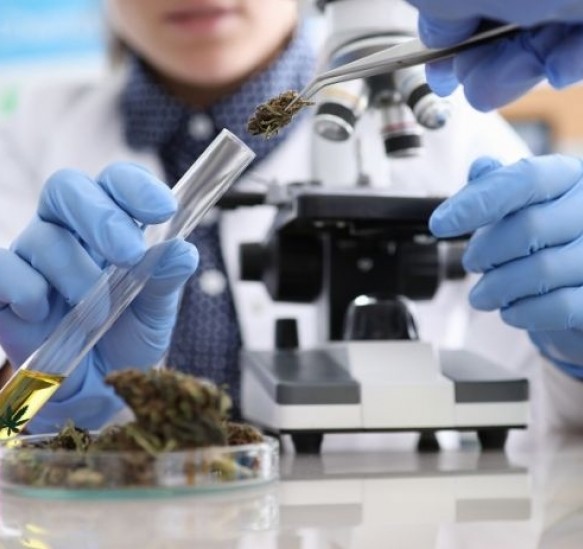The definition of the central endocannabinoid system
Our body is full of secrets that we have not yet discovered, and for a long time we did not know about the endocannabinoid system, although it was present in our body. It was only in the 80's that it was mentioned, at that time there was a lot of research going on to find out the effects of THC on the human body.
This system runs through our body and consists of membrane receptors located on the surface of the cells, each receptor plays the role of a lock that is called a ligand. Ligands open the door to the cell and lead to a signal that can have a biological effect. In other words, the receptors of the endocannabinoid system allow us to experience the side effects and benefits of molecules from cannabinoid plants like Cannabis Sativa, namely THC and CBD.

What are cannabinoids?
Cannabinoids are the chemical messengers naturally present in the human body. Despite their great diversity, they are simply grouped into two categories, namely:
- Exogenous: exogenous cannabinoids come from outside the body, you find them in cannabis. For example, there is tetrahydrocannabinol (THC) and cannabidiol (CBD). During the consumption of these natural molecules, each of them interacts with the SEC, which is the endocannabinoid system;
- The endogenous: the endogenous are located inside your body, they are produced naturally and can also interact with the receptors. They regulate many vital functions such as appetite and pain.
What about cannabinoid receptors?
Within the ECS, there are two main cellular receptors:
- The cannabinoid receptor 1, also known as CB1. It takes place throughout the human body, however its presence is stronger in the brain and spinal cord. It interacts with the brain and more specifically with areas associated with behaviour. For example, it regulates appetite, memory and emotions;
- The cannabinoid receptor 2, nicknamed CB2, is rather present in the peripheral nervous system and immune cells.
As you can see, it plays a role in the development of an immune response to diseases and other health-related disorders.

Understanding Natural and External Endocannabinoids
Fatty acids are the creators of endogenous endocannabinoids and these come in two types:
- Anandamide: this was discovered first and is located in remote areas of the brain;
- 2-Aeachidonoyl glycerol, aka 2-AG: it is much more present in the brain.
The endocannabinoids naturally present in the body are special neurotransmitters. They only react when the body deems it necessary.
But there are also exogenous endocannabinoids, i.e. from an external source. Cannabis use is one source of external endocannabinoids. Again, there are two:
- CBD
- THC
The role of the endocannabinoid system
Now that you know all the elements that make up this particular system, you can easily guess the role it is capable of playing in the body. As time goes by and discoveries are made, the role and different functions of the endocannabinoid system have gradually been brought to light. Here are some of the functions that the system interacts with:
- Mood
- Appetite
- Sleep
- Pain
- Immune function
- Memory
- Metabolism
- Digestion
- Reproduction
- Neuroprotection
- Inflammation









